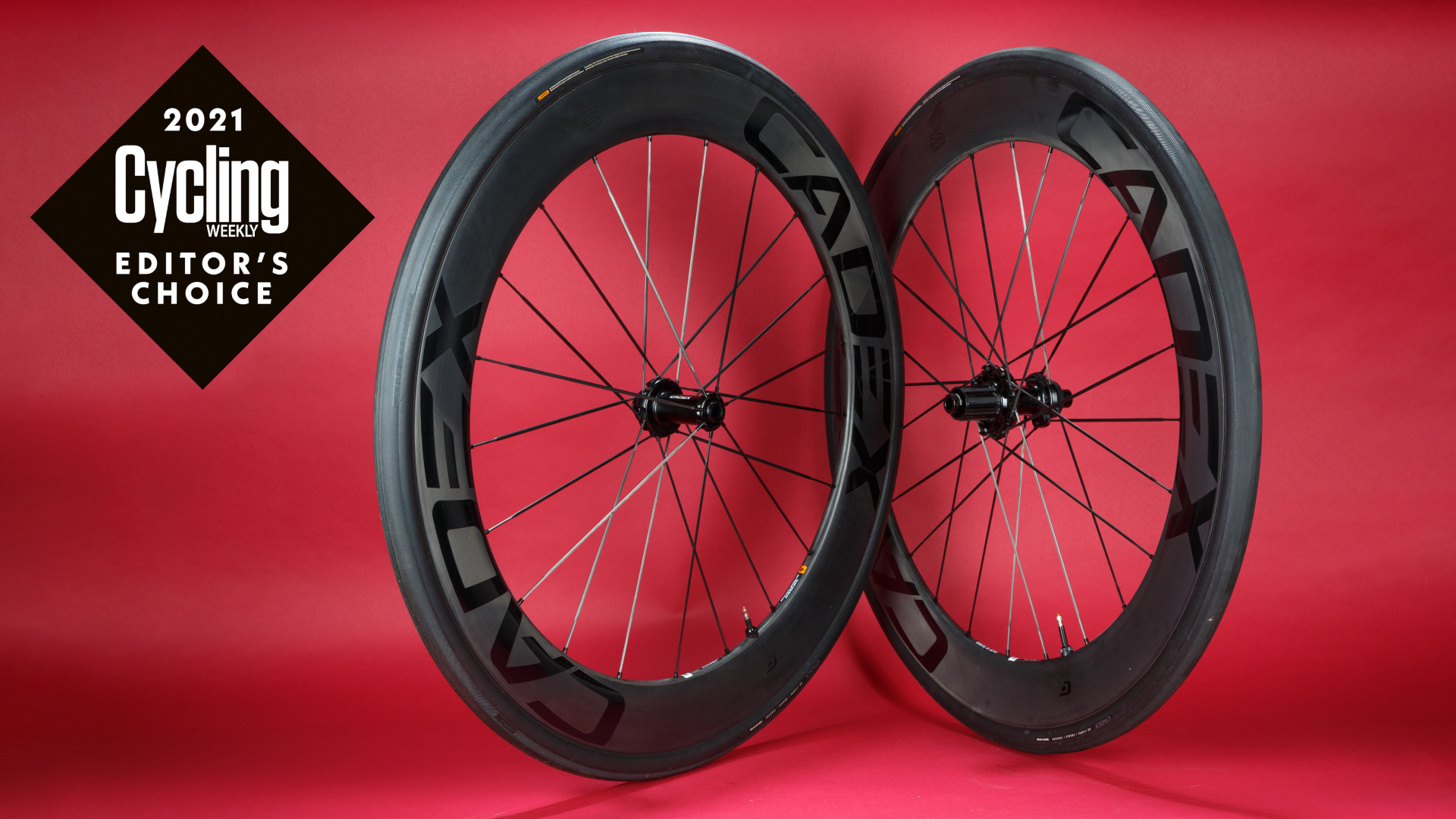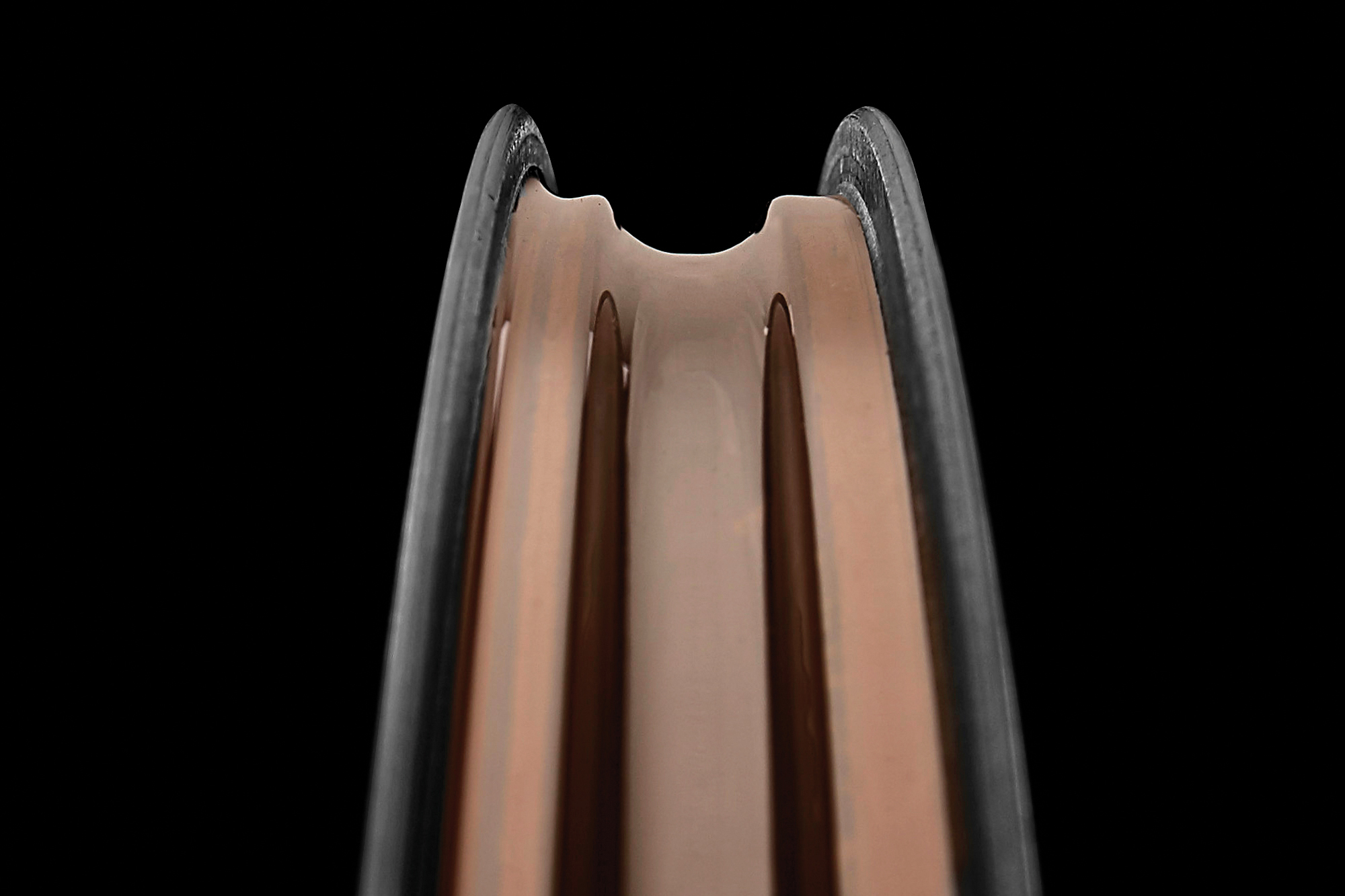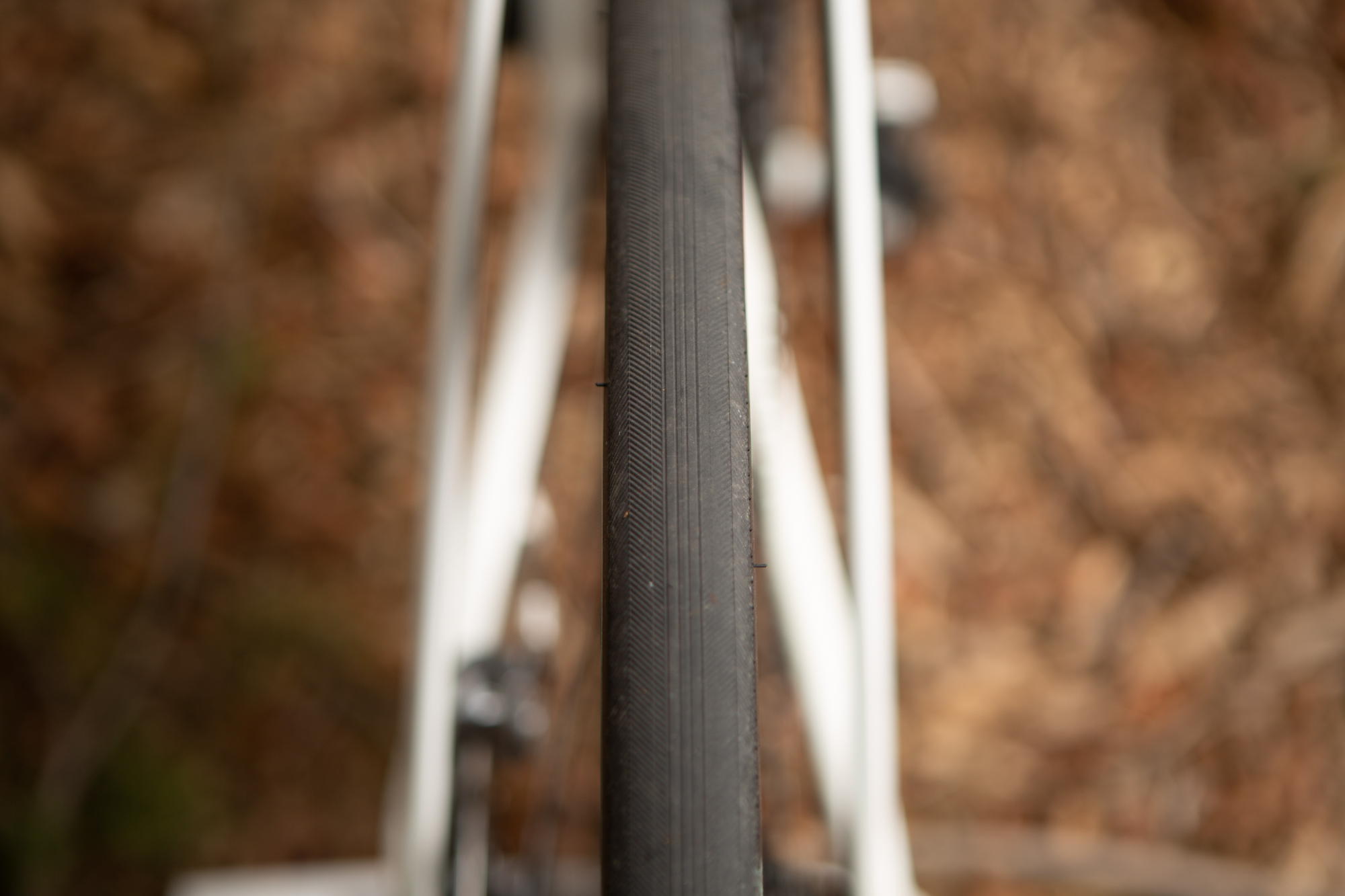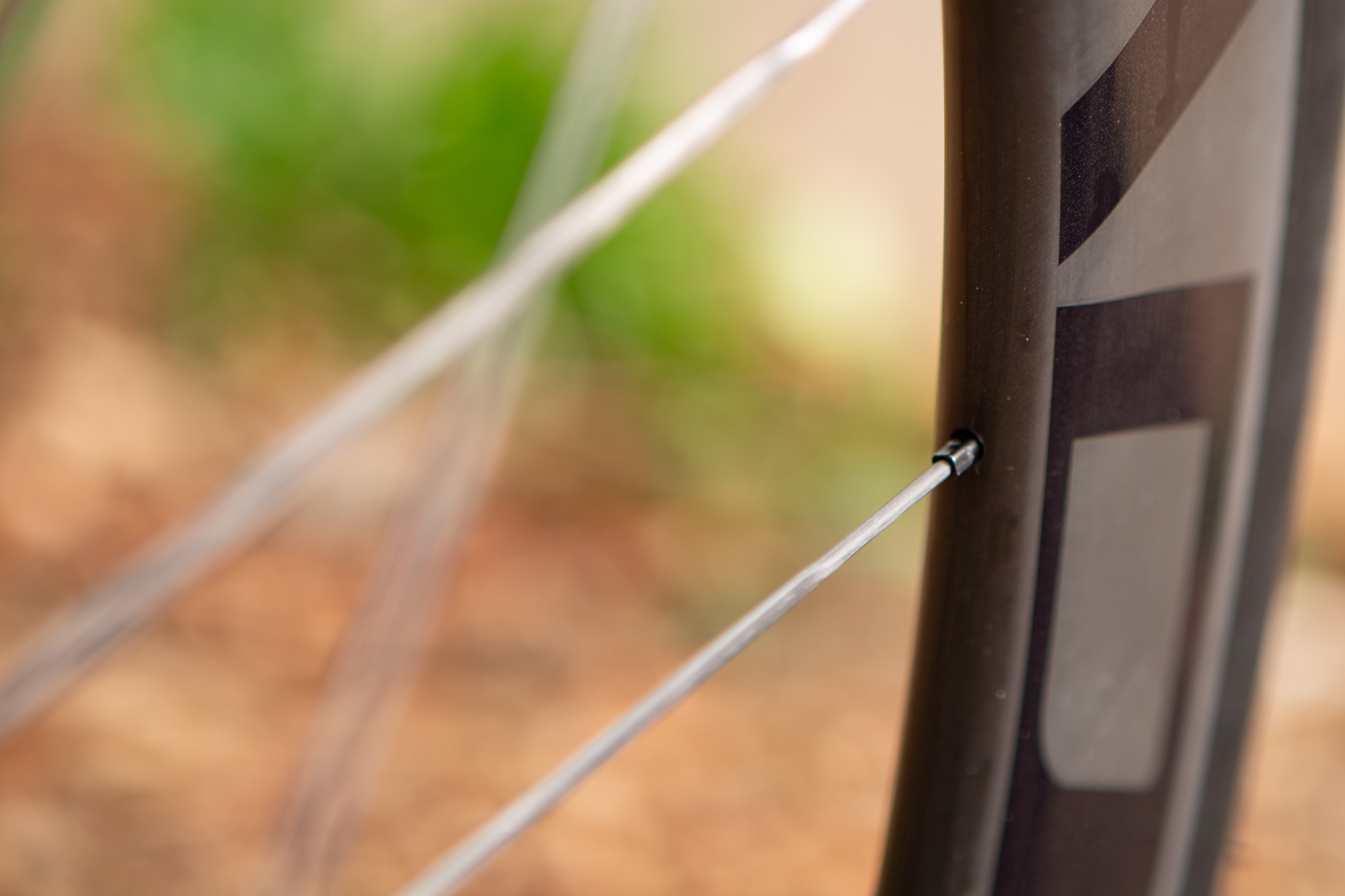CADEX 65mm Road Wheelsystem review
A deep, aero, wheel packed with all the latest tech and light enough to be a climber, could this be your new everyday wheel?

As technology progresses the recommendation for an everyday wheel continues to get deeper. A 50mm deep wheel is now the standard for most situations. Deeper wheels are more aerodynamic but the added weight and extra flex means that they become more specialized. With a wheelset weight of only 1501 grams, the CADEX 65mm Road Wheelsystem is light enough to be a climber specific wheel. Pair that with enough stiffness that they climb with the best of them and high-volume tires for comfort. It all adds up to one conclusion, make the CADEX 65mm Wheelsystem your everyday wheel.
-
+
Lightweight
-
+
Wide Internal Dimensions
-
+
Hookless Design
-
-
Expensive
You can trust Cycling Weekly.
I review technology as it relates to bikes and I have to admit I wasn't familiar with the CADEX brand name. As it turns out, CADEX is part of the modern history of the bicycle but there is a good reason I hadn't heard of them, and you might not have either.
In 1987 the Giant group took on the moonshot project of building a super lightweight, fully carbon frame bike. It was revolutionary for the time and they wanted a dedicated group working on it. After that project ran the course into the 90s, the CADEX brand went dormant. Then in 2019 it came back with a similar mission. Giant is the largest bicycle manufacturer in the world and CADEX is the sub-brand creating the best of the best. The absolute pinnacle product.
After spending some time with the CADEX 65mm Road Wheelsystem I believe they have succeeded. The CADEX 65mm Road Wheelsystem is one of the best road bike wheelsets available today.
Features
There are three sections to a wheel. When it comes to the CADEX 65mm Road Wheelsystem each piece is a technical marvel in its own right.
The Rims
Talking about the rim itself, the technology of note is that it's a hookless design. If you want to dive deep into hookless technology, Cycling Weekly has an entire article devoted to it. Just to be clear though, it's not new. Hookless technology is the same technology that passenger cars have used for a very long time.
When it comes to bike wheels there are benefits to hookless technology pretty much no matter what angle you look at it from. If you look at it in terms of comfort and flat protection then you get a wider, lighter, rim. A hookless rim makes for a wider internal width without needing to make the external width wider. The wider internal width means lower pressures and a more comfortable ride. It also means better tubeless sealant performance and less possibility of puncture in general.
If you prefer to look at it in terms of manufacturing then it's all about simplicity. With the extra detail of the hook at the edge of the rim the carbon layup is less complicated and stronger while also lighter. Instead of a curved over edge detail that has to be strong you get a nice straight line. It's stronger with less material.
Another way to look at hookless tech is aerodynamic performance. A hooked rim pinches the tire. The more you can keep the edges of the tire parallel to the edges of the wheel the better the aerodynamic performance. With the hooked rim pinching the tire you get a less parallel sidewall and that creates more of a lightbulb profile. Using a hookless wheel allows a wider tire with better aerodynamic performance. The straighter sidewalls also happen to make for better performance in turns because of more sidewall support.
For those of you who have heard bad things about hookless, the challenge with hookless has often been tires. The bike industry is small and generally without much oversite. Tires haven't always used manufacturing standards high enough for tubeless or for hookless wheels. That's changing though, particularly with the CADEX tires. The CADEX tires use tight manufacturing tolerances and will not stretch over time.

The Tires
The CADEX Race Tires are some of the best I've ever ridden. I will choose a stiffer tire with better puncture protection in most cases. There's kind of a Goldilocks zone where the puncture protection is good enough but the tire still feels good. The CADEX Race Tires fall into that zone. They feel great and yet riding around a medium sized city in the spring I experienced no punctures. The winter, and in particular the pandemic, has been a tough blow for the bike lanes. Everywhere I ride has broken glass and sharp gravel. Despite that, the tires look brand new and that's the best I can hope for.
Although I used CADEX tires while testing these wheels you aren't required to. CADEX has a page devoted to tire compatibility. Check it out if you want to run something different.
It's also worth noting that I ran this setup at 50psi and found it to be perfect. Almost everyone I talk to runs too much pressure in tubeless tires. If you want to further explore the recommendations from CADEX they also have a page dedicated to finding the right tire pressure.

The Spokes
The next piece of the puzzle with the CADEX 65mm Road Wheelsystem are the spokes. The spokes are carbon with an alloy head and an internal nipple. Looking at the wheels it appears to be a traditional spoke nipple design however the exposed alloy section at the rim is not a nipple. Instead, what you see is a mechanically joined threaded spoke head. This allows the internal nipple to thread onto the spoke as well as prevents twisting during assembly or truing.
Moving from the inside of the rim towards the hub, the CADEX Carbon Spoke tapers from a round shape to a truncated airfoil shape. The airfoil section is a directional truncated design. Designing it started with computational fluid dynamics (CFD). From there the design went through wind tunnel testing to check and refine the CFD assumptions. Using the round ends allows for better flexibility in length sizing. At the same time the round end adds strength and stiffness at the junction of the rim and hub.
On the other end, the CADEX Carbon Spoke connects to the CADEX Low-Friction hub. At this connection there is a similar mechanically joined alloy T-shaped section that is permanently part of the spoke. The T-shaped alloy part of the CADEX Carbon Spoke locks into the flange of the hub to ensure proper spoke alignment.

The Hubs
Talking about the hub is a discussion in precision. The basic design isn't completely revolutionary but it's precise. Keeping things very precise eliminates unnecessary side to side movement. That reduction increases durability and minimizes rolling resistance.
Getting a little more specific, CADEX uses a 30-tooth ratchet type hub. Ratchet hubs are less complex and by extension more reliable. Less complexity, and less pieces, also makes for lower weight. Balancing engagement points vs reliability is the magic. In this case, CADEX went with a 30-tooth ratchet system. You can find higher, and lower, counts on the market but this is where CADEX landed. My experience was quick engagement and a beautiful sound right from the beginning.

In Use
There's plenty of technical details in this article. If you want to know all the ins and outs of exactly how it all works, I've done my best to provide it. That's not what I find exciting though. The exciting part of these wheels from CADEX is when you take them out for a ride.
I started by setting up the CADEX race tires in a 28mm width. It's a tight bead but you can get it on without worrying about breaking tire levers. Setting the bead worked without using any special tubeless tricks. The tolerances are exact enough that the tires inflated using only a standard pump.
The rear wheel did end up needing the tape redone. This provided a spotlight on both the excellent Giant branded tubeless tape as well as the fact that slow leaks are super obvious on these wheels. Put your ear up to the side of the wheel and you can hear the echo of the air escaping. Not really a welcome sound but easy enough to fix and it's a nice side benefit of such a deep cavity within the wheel.
With everything ready to go I went out for the first ride. My first impression, and the lasting impression, is how amazingly stiff the CADEX 65mm Road Wheelsystem is. My everyday wheels are a deep carbon wheel that a few teams in the worldtour use. They are some of the best wheels available yet they pale in comparison. The CADEX wheels have a distinct lack of flex side to side.
Despite that lack of flex, they aren't harsh. The internal width is massive, for a road bike wheel, at 22.4mm. Paired with a 28mm tire and 50psi it's a comfortable ride. Your ideal pressure will change depending on weight and tire size but it's always going to be a generous volume and plenty of passive suspension. It's both comfortable and responsive.

Value
The CADEX 65mm Road Wheelsystem represents the absolute best of the best. There are reasonable competitors but it's a small group of manufacturers producing wheels at the very top level. The pricing reflects that.
If you consider all wheels available for bikes then look at the pricing for these it's going to be a shock. Start looking at other deep, full carbon, disk wheels though and things make more sense. I can't tell you that a Ferrari is a bargain. What I can tell you is that the CADEX 65mm Road Wheelsystem pricing makes sense in comparison.
At this weight and depth there are other options that are both more expensive and less. You can go heavier with a focus on greater aero performance or you can go cheaper for a bit less depth. If you like what CADEX is offering though there's nothing quite like it on the market. It's not a cheap wheel set but what you get is exceptional and the price makes sense.

Thank you for reading 20 articles this month* Join now for unlimited access
Enjoy your first month for just £1 / $1 / €1
*Read 5 free articles per month without a subscription

Join now for unlimited access
Try first month for just £1 / $1 / €1
Get The Leadout Newsletter
The latest race content, interviews, features, reviews and expert buying guides, direct to your inbox!
Josh hails from the Pacific Northwest of the United States but would prefer riding through the desert than the rain. He will happily talk for hours about the minutia of cycling tech but also has an understanding that most people just want things to work. He is a road cyclist at heart and doesn't care much if those roads are paved, dirt, or digital. Although he rarely races, if you ask him to ride from sunrise to sunset the answer will be yes.
Height: 5'9" Weight: 137 lb.
Rides: Orbea Orca Aero, Cannondale Topstone Lefty, Cannondale CAAD9, Trek Checkpoint, Priority Continuum Onyx
-
 A bike rack with an app? Wahoo’s latest, and a hub silencer – Sea Otter Classic tech highlights, Part 2
A bike rack with an app? Wahoo’s latest, and a hub silencer – Sea Otter Classic tech highlights, Part 2A few standout pieces of gear from North America's biggest bike gathering
By Anne-Marije Rook Published
-
 Cycling's riders need more protection from mindless 'fans' at races to avoid another Mathieu van der Poel Paris-Roubaix bottle incident
Cycling's riders need more protection from mindless 'fans' at races to avoid another Mathieu van der Poel Paris-Roubaix bottle incidentCycling's authorities must do everything within their power to prevent spectators from assaulting riders
By Tom Thewlis Published
-
 Man hands himself in to Belgian police after throwing full water bottle at Mathieu van der Poel during Paris-Roubaix
Man hands himself in to Belgian police after throwing full water bottle at Mathieu van der Poel during Paris-Roubaix30-year-old was on Templeuve-en-Pévèle cobbled sector when television pictures showed the bottle hitting him in the face
By Tom Thewlis Published